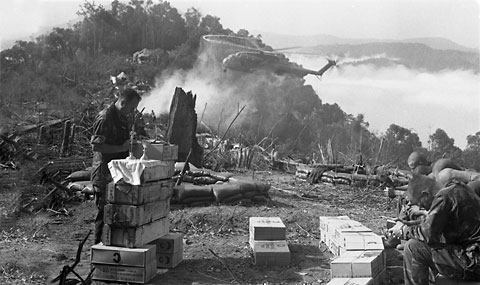 |
||||||||||||
|
November/December 2016
BY WILLIAM C. TRIPLETT
Vietnam was far from the first war zone in which chaplains feared not to tread. Ministers of some sort accompanied troops of this country even before the Revolutionary War. Still, the idea of preaching the virtues of heaven in what can be hell-on-earth has always seemed, at the very least, an odd juxtaposition. On the surface, chaplains and soldiers have little in common—the former being trained to save souls, the latter to take lives. But they are all human, which may explain why a tour of duty in Vietnam apparently could have much the same effect on you whether you carried a weapon or scripture. Like many others who volunteered to serve, Army chaplains arrived in-country believing in a just fight to help an ally repel godless communism. “You thought this was a good thing when you went over,” said Richard Shannon, who’d been a Catholic priest in Chicago before sailing into Da Nang as part of the 198th Light Infantry Brigade in late 1967. “I went over believing in the war, supporting it,” said Charlie Marshall, a Protestant minister from Pennsylvania who went over with the 4th Cav. in late 1968. “I’d grown up with a lot of Eastern European refugees who fled the Soviet bloc, so I was very anti-communist.” Some chaplains, such as Ken Herbster, a priest from New Jersey who arrived in Vietnam in 1967 with the 9th Infantry Division, were skeptical of war in general. “But we were putting guys into danger, so you couldn’t abandon them,” he said. “So I went over thinking, ‘Okay, I’ll help take care of the guys who have to do this.’ ” Did the guys feel any need for such care? According to historian Doris Bergen, editor of The Sword of the Lord: Military Chaplains from the First to the Twenty-First Century, the troops in Vietnam tended to regard chaplains as part of the military establishment, interested only in making sure fighting men were prepared to do what was expected of them.
“I think the biggest gap in the service was between those who were lifers and those who weren’t,” Day said. “Your lifers were the career military—the higher-ranking NCOs and officers. They were the establishment. At the age of twenty-six, I was as young as a chaplain could be. I did not picture myself as career. Doing a good job for me meant getting as far forward as I could and spending as much time as possible on firebases. That may have kept me from being considered too ‘establishment.’ ” At base camp—for Day, it was Dak To when he arrived in 1968—a chaplain would hold services sometimes as many as six or seven times on a Sunday. But in the field, “It was services all week long,” Day said. On any given Monday through Saturday morning he’d hop a ride on a chopper headed to a firebase, hold a service whenever possible, then wait for the next chopper that might have room to take him back or to another firebase. “I was a professional hitchhiker,” he said.
Shannon was in I Corps, at Chu Lai. Like Day and Marshall, he also hitched rides to and from the field. Sometimes he’d hold services on a firebase inside the perimeter, and sometimes he’d hold a service outside the perimeter if he was with a unit. “I was with one group, and we were going through a cemetery so we stopped to have a mass,” Shannon said. “I put the white vestment on. Then we were getting sniper fire, so I was down below the tombstones saying mass. Never wore the vestment again out in the field.” Herbster was with a battalion of the 9th Infantry in the Mekong Delta, essentially based aboard a collection of six Navy ships docked along the river. “We had sailors, Marines, and GIs on the ships, and they’d ferry me around on weekends in a Boston Whaler from one ship to the next for Sunday services,” he said. During the week he’d sometimes offer evening mass on the upper deck of the ship where he bunked, “but the rest of the time I’d be out with troops on maneuvers or operations.” Herbster would ride in the med boat that followed the assault craft until they put to shore. He and a battalion surgeon, as well as a Navy corpsman, then accompanied disembarking soldiers into the jungle. It didn’t take long to get shot at. “There were a lot of little skirmishes, but the first battle that I was involved in, they’d pulled the med boat up onto shore,” Herbster said. “December 4, 1967—burned into memory. There were a lot of casualties. And the three of us were picking up the casualties and bringing them back to the boat.” At firebases, a chaplain’s work tended to be less harrowing. “We never dropped into the middle of a firefight,” as Day put it. That’s part of the reason a lot of troops on a firebase liked to see a chaplain arrive. “They figured if the chaplain were there, then things must be fairly stable. So in a way, our presence was always reassuring.”
But the war was always there. Holding memorial services and giving last rites were far too frequent occurrences for a lot of chaplains in the field. “At the time you just did it,” Herbster said. “I think my reaction, in the beginning, was simply we’ve got to do this. But toward the end of the tour, there was a mass of casualties once, and they just told me the bodies are out on the chopper pad. I performed services on the pad. That got me.” When not holding services of some kind, most chaplains tried to make themselves available to anyone who might need a sympathetic ear. “Guys would talk mostly about family concerns, or Dear John stuff,” Marshall said.
The nature of the war—more of attrition than territory, often against an enemy indistinguishable from people you had come over to protect—took its toll. “All these eighteen-year-old kids who came over full of idealism,” Marshall said, “what did the war do to them? It gave them a good dose of what I called nihilistic thought. They expressed it in more earthly terms, like, ‘Screw it, it don’t mean anything.’ I constantly tried to work against that, to give these guys some sense of meaning.” For Jackson Day, to be a man of God in a godless situation often meant “some significant compartmentalization had to go on.” At one firebase, Day’s assistant recorded his service. “I listened to it afterward and thought it was nice, and just put the tape away,” Day said. “It was only listening to it again maybe six or seven years later back here that I had the jarring realization that while I was leading the troops in a chorus of ‘They Will Know We Are Christians by Our Love,’ you could hear B-52s carpet-bombing over on the next ridge.” Work could be just as challenging back at base, where part of the job meant visiting the wounded of your unit in hospitals. “It was hard to see all these guys, our guys, with legs gone and stuff like that,” Shannon said. “I began not to like the war more and more.” Herbster, Day, and Marshall all began to feel the same toward the end of their respective tours, though all still felt positively toward the troops and the military. “The more you were there, you could see the corruption the South Vietnamese were going through, the waste that we were going through, killing innocent civilians,” Shannon said. “So my enthusiasm for the war went down, but not for the Army.” The war seemed “futile,” Herbster said, and the situation back home wasn’t much better. “The soldiers coming home were mocked and criticized, but the Army was only doing what the politicians said was necessary. But all the criticism came down on the GIs.”
“I was getting kind of numb toward the end,” said Marshall. However, the breaking point for him was the chasm between what Washington was telling the country about the war and what he was experiencing, particularly in the bloody aftermath of the Tet Offensive. “I was in Vietnam under two presidents,” he said, “and when you see a president not telling the truth, telling people, ‘This is not happening,’ and you’re sitting there watching it happen, well, I was having a hard time with it. I had two kids by then already. I was doing everything I could to keep from getting plugged.”
But for Day, My Lai crossed a line. “It was the extent of it, the numbers, the pictures, which were graphic, and it was the fact there was really no excuse,” he said. “You can’t say you made a mistake with five hundred people.” Still, he doesn’t think former Lt. William Calley and his platoon were solely to blame. “It was a logical outcome of the emphasis on body counts as a way of measuring our success,” he said. The day before the massacre, Richard Shannon held memorial services in the field for a company of the 11th Brigade of the Americal Division. The company, which included Calley’s platoon, had just been ambushed. “It was a big service for all these guys they’d lost,” said Shannon, who also held a mass for Catholics that day. “Then the next day they went out and shot all these people at My Lai.” Shannon didn’t actually learn of the massacre until most of the rest of the world did, in November 1969, nearly twenty months after it happened. He was then assigned to Fort Carson. Still, Army investigators called him to the Pentagon for questioning. “There was a general in charge,” Shannon said, “and he asks me, ‘If somebody comes to you in confession, and confesses they’d killed all these people, what would you have done?’ I said, ‘I couldn’t do anything without his permission. If I asked him, “Could I reveal it to higher-ups?” and he said, “Okay,” then I could do it. But I never heard of anything. Never spoke to anyone who was involved.’ ” Before coming home, all four chaplains were warned not to wear their Army uniforms on the street. The country wasn’t in a welcoming mood, and people who accosted men in uniform weren’t likely to care whether you were a chaplain or soldier. Also like a lot of other veterans, Herbster came back with a pretty good case of PTSD. “The classic nightmares,” he said, “not being able to sleep, reliving some of the situations.” After one “scary episode,” he went to a VA hospital, was diagnosed, and given a disability declaration. He still has the occasional bad night, but said things are better now. Like so many others, Day wasn’t sure of what was happening to him after coming home. “You can shove psychological trauma in the background and keep functioning,” he said. “But then twenty years later you look back and say, well, isn’t that interesting: There’s a five-year period when I was in two marriages, four jobs, and six different residences. That’s a pretty unstable five years. But I never noticed it at the time.” Marshall said he still struggles with survivor’s guilt and a severe case of distrusting political authority. “I came back with a lot of resentment toward people who wore suits, who were from Washington, D.C., and sat under the Capitol dome.” Asked what he thought the biggest impact the Vietnam War had on him, Marshall gave an answer that few of his fellow chaplains might dispute: “I stopped seeing things as absolutes. I started seeing everyone has a dark side. My goal was to keep from losing them to the dark side, but you don’t always win.”
|
||||||||||||
|
|
||||||||||||
|
||||||||||||
8719 Colesville Road, Suite 100, Silver Spring. MD 20910 | www.vva.org | contact us |
||||||||||||





















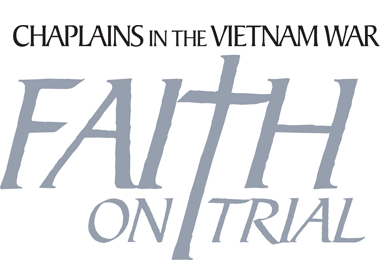
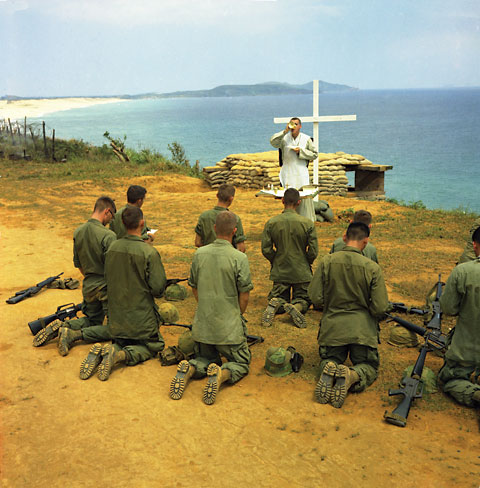 A few things you might not know about the U.S. Army Chaplaincy—Military Occupational Specialty 5310—and the Vietnam War: At their peak more than six hundred chaplains, all volunteers, served in Vietnam; three hundred served in the field; more than a dozen were killed in action; two were awarded the Medal of Honor; and more than a few came back with PTSD.
A few things you might not know about the U.S. Army Chaplaincy—Military Occupational Specialty 5310—and the Vietnam War: At their peak more than six hundred chaplains, all volunteers, served in Vietnam; three hundred served in the field; more than a dozen were killed in action; two were awarded the Medal of Honor; and more than a few came back with PTSD.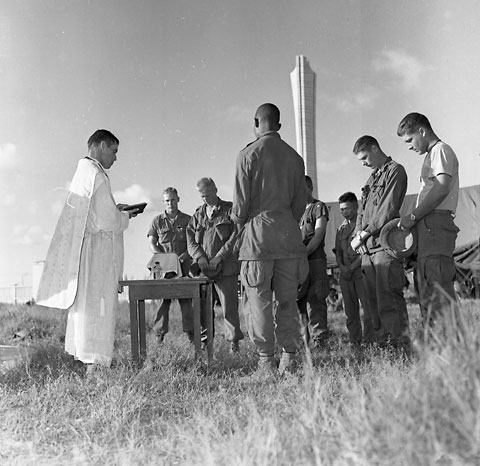 But that may have involved a generational difference, according to Jackson Day, a Protestant minister who served with the 1st Brigade of the 4th Infantry Division, and who was sometimes referred to as “the hippie chaplain.”
But that may have involved a generational difference, according to Jackson Day, a Protestant minister who served with the 1st Brigade of the 4th Infantry Division, and who was sometimes referred to as “the hippie chaplain.”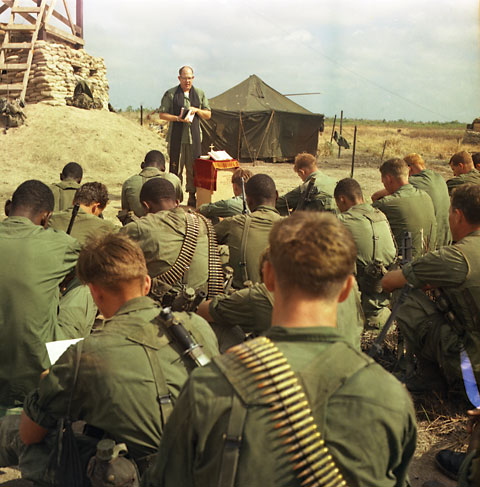 For Marshall, at LZ Oasis near Pleiku, the daily routine was much the same, except his outfit had to share helicopters with a combat aviation brigade. “Not having many choppers available made things difficult to move around,” he said. It required a little more perseverance. “We figured if we could get to all of our units within two weeks, we were reaching a goal.”
For Marshall, at LZ Oasis near Pleiku, the daily routine was much the same, except his outfit had to share helicopters with a combat aviation brigade. “Not having many choppers available made things difficult to move around,” he said. It required a little more perseverance. “We figured if we could get to all of our units within two weeks, we were reaching a goal.”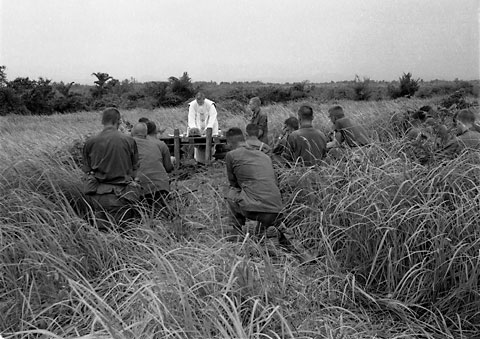
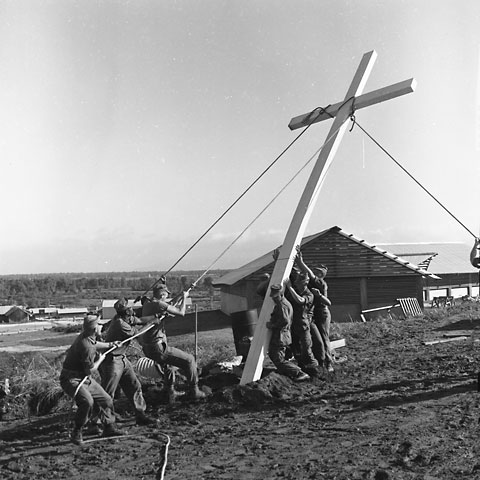 Sometimes grief and guilt had to be dealt with, such as when a friendly-fire incident occurred on a firebase. “Someone on outpost was not where he was supposed to be, and he was killed by his best friend,” Day said. “This tore apart everyone. I basically moved out there for a week-and-a-half with the whole unit just to be available to talk. The best thing you can do in a situation like that is listen and help people process their own feelings and issues.”
Sometimes grief and guilt had to be dealt with, such as when a friendly-fire incident occurred on a firebase. “Someone on outpost was not where he was supposed to be, and he was killed by his best friend,” Day said. “This tore apart everyone. I basically moved out there for a week-and-a-half with the whole unit just to be available to talk. The best thing you can do in a situation like that is listen and help people process their own feelings and issues.”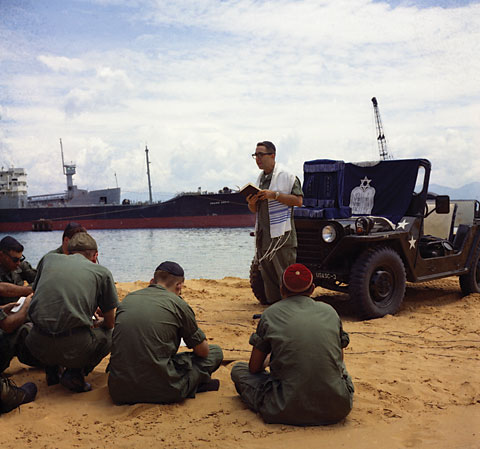 “You’d go take a mountaintop, defend it, lose some people, there’d be some memorial services, then you’d pack up and leave for some other mountaintop where you did the same thing,” said Day. “At the end of my year, there was a sense of being no farther ahead than when I’d arrived.”
“You’d go take a mountaintop, defend it, lose some people, there’d be some memorial services, then you’d pack up and leave for some other mountaintop where you did the same thing,” said Day. “At the end of my year, there was a sense of being no farther ahead than when I’d arrived.”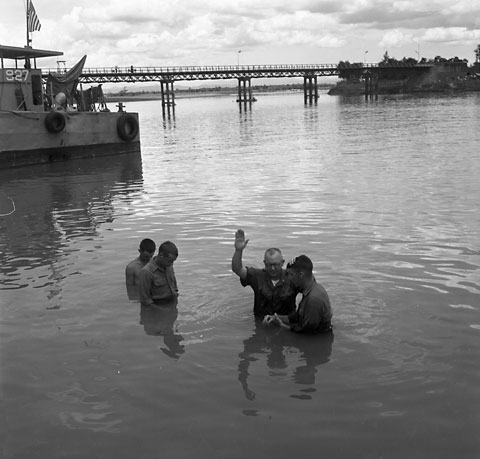 The notion that there was something fundamentally wrong about the prosecution of the war seemed irrefutable to both Day and Shannon when news broke of the My Lai massacre. Every war kills civilians to some degree, and a guerilla war can sometimes resemble a lethal free-for-all. “You get troops out there, it’s us-against-the-world, really, and rules don’t apply anymore,” Day said. Especially when you’re losing people to booby traps, fueling frustration and rage.
The notion that there was something fundamentally wrong about the prosecution of the war seemed irrefutable to both Day and Shannon when news broke of the My Lai massacre. Every war kills civilians to some degree, and a guerilla war can sometimes resemble a lethal free-for-all. “You get troops out there, it’s us-against-the-world, really, and rules don’t apply anymore,” Day said. Especially when you’re losing people to booby traps, fueling frustration and rage.